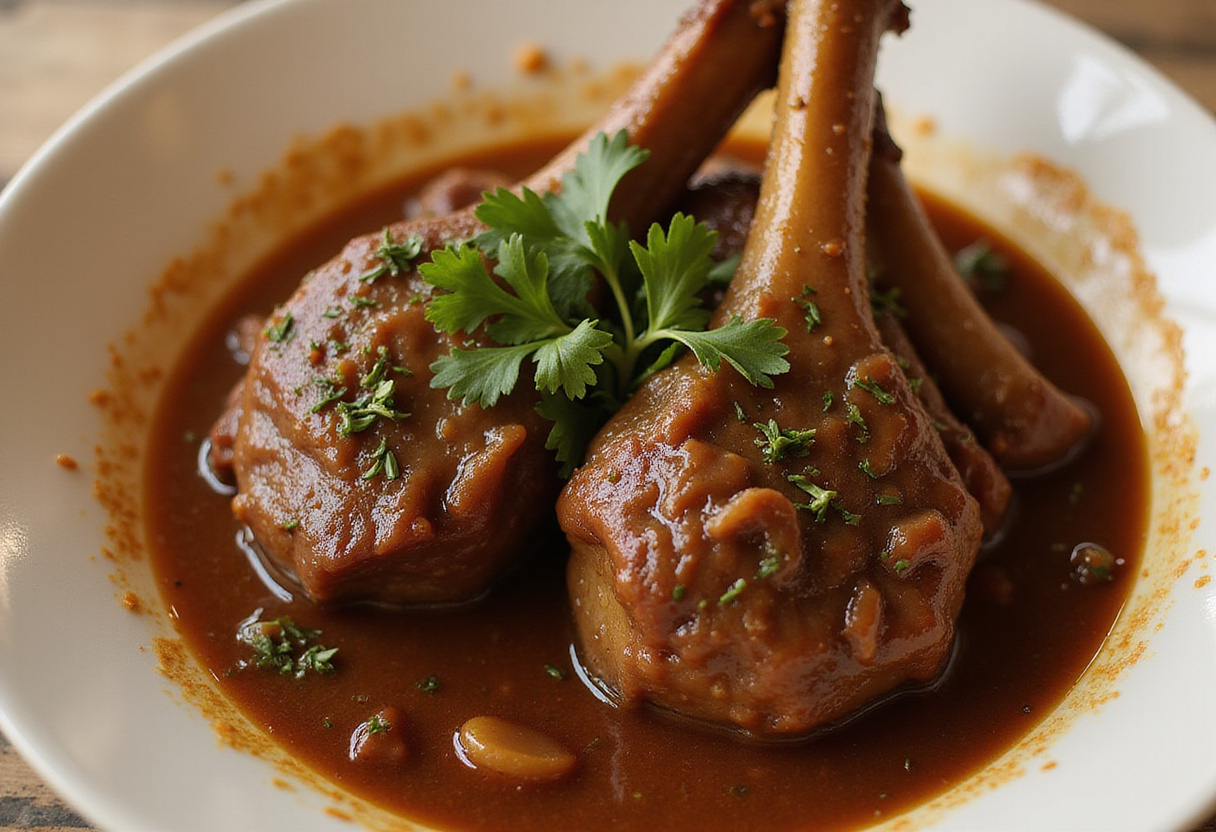Beef Shank Slow Cooking: A Guide to Tender, Flavorful Perfection 🍖🕰️🔥
1. Introduction
Is beef shank good for slow cooking? The unequivocal answer is yes! Beef shank, a cut sourced from the leg of the cow, often escapes the spotlight but is, in fact, a stellar candidate for slow cooking techniques, such as braising or employing a slow cooker. Its remarkably rich collagen content undergoes a magical transformation during the extended, low-temperature cooking journey. This results in supremely tender meat, bursting with flavor. This article aims to illuminate why the combination of beef shank slow cooking is a match made in culinary heaven. We’ll provide invaluable tips, and essential techniques that will lead you to achieve extraordinary results with your chosen beef shank recipes. Whether you’re a seasoned culinary expert or just a passionate home cook, you’ll learn just how to leverage this cost-effective and absolutely delectable cut. So, let’s embark on a journey into the realm of braised beef shank and unlock its full, untapped potential.
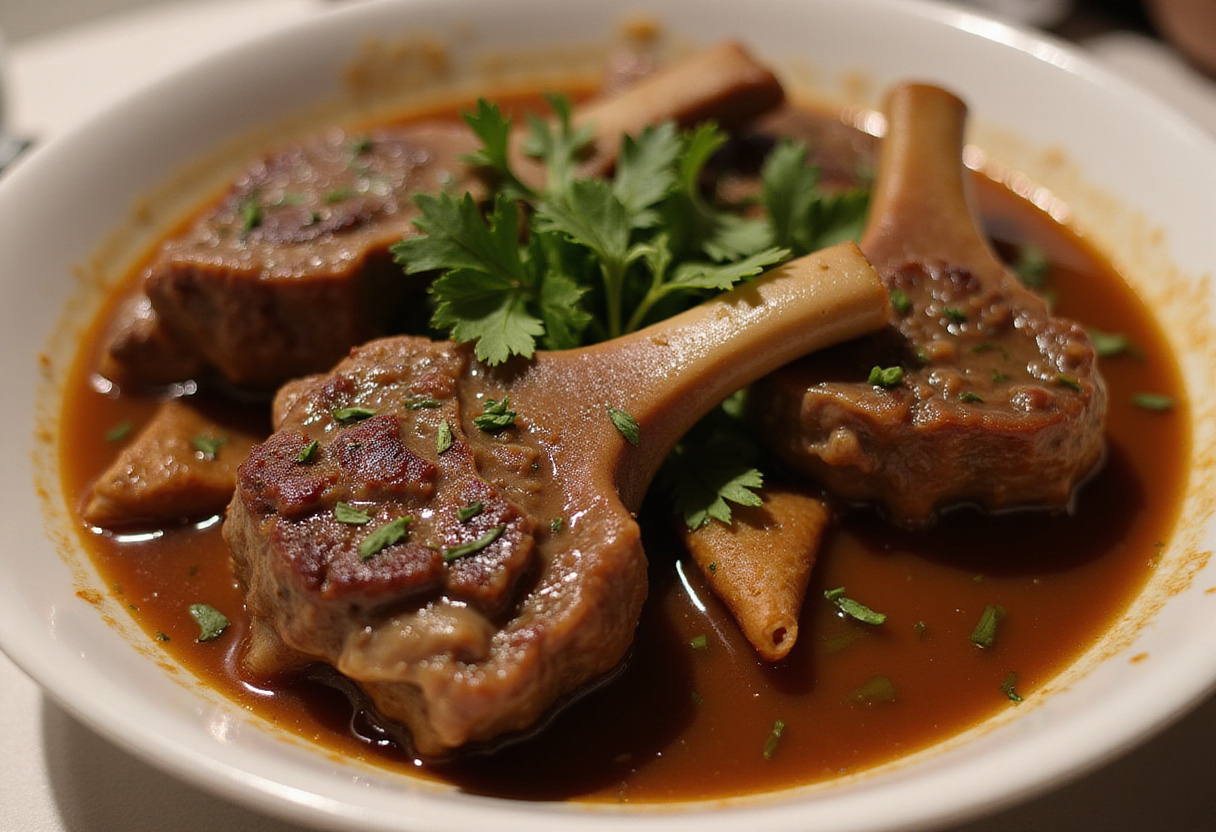
2. What is Beef Shank?
Beef shank is derived directly from the leg of the cow, focusing on the region surrounding the tibia and fibula bones. As a cut of meat, it’s known for being tougher, characterized by its leanness and the presence of a considerable amount of connective tissue, predominantly collagen. The collagen composition is the crucial reason beef shank is particularly well-suited for slow cooking methods. When subjected to prolonged cooking at a gentle, consistent temperature, the resilient collagen starts to break down, transforming and gelatinizing within the meat. This metamorphosis contributes to an extraordinarily rich and melt-in-your-mouth exquisite texture. While it might not be the obvious choice for speedy cooking applications, the peculiar characteristics of beef shank elevate it to a position of prominence in dishes that celebrate both the art of time and patience. Craving something sweet after your hearty meal? Maybe bake some moist cake.
3. Why Beef Shank is Ideal for Slow Cooking
The aforementioned high collagen content stands as the paramount reason that beef shank is so exquisitely primed for the slow cooking process. As we’ve highlighted, the extensive collagen breaks its bonds and transforms into luscious gelatin. This process tenderizes the meat to perfection and imparts a notably luxurious mouthfeel. Moreover, the extended slow cooking period facilitates the development of deep, nuanced flavors, culminating in a complex and richly satisfying taste profile. Whether you’re following a delectable slow cooker beef shank recipe or opting to braise it gracefully in the oven, the prolonged cooking duration guarantees that the meat attains an exceptional level of tenderness, unparalleled moisture, and a remarkably robust flavor. If you’re interested in other cake recipes, check out this chocolate pound cake.
4. Benefits of Slow Cooking Beef Shank
The advantages inherent in slow cooking beef shank are manifold. To begin, the process gracefully transforms a typically tough cut of meat into a genuinely tender delicacy. The nature of the slow cooking method allows flavors an opportunity to harmonize, resulting in a profoundly fulfilling dish. Furthermore, the recipes for slow cooker beef shank are often celebrated for their sheer convenience, demanding remarkably minimal hands-on involvement. It’s a culinary process that allows you to initiate the cooking and then confidently leave it to its own devices, making it absolutely ideal for those hectic weeknights. Finally, take note that beef shank is frequently a more affordable cut of meat. That makes it a budget-conscious gateway to creating hearty and supremely delicious meals. Perhaps you would like to know the difference between a normal cake and a pound cake?
5. Step-by-Step Guide to Slow Cooking Beef Shank
Step 1: Preparing the Beef Shank
Begin by carefully selecting the highest-quality beef shanks available. Prioritize shanks that exhibit a generous meat content coupled with a desirable degree of marbling. Before moving forward with the cooking process, meticulously pat the beef shanks, ensuring they are thoroughly dry using paper towels. This seemingly small step proves invaluable in promoting the development of an appealing sear. You have the option to request that the butcher divide the shanks into smaller, more manageable portions. This facilitates both easier handling and potentially shorter cooking times. If you enjoy chocolate cake, try this 3-layer german chocolate cake recipe.
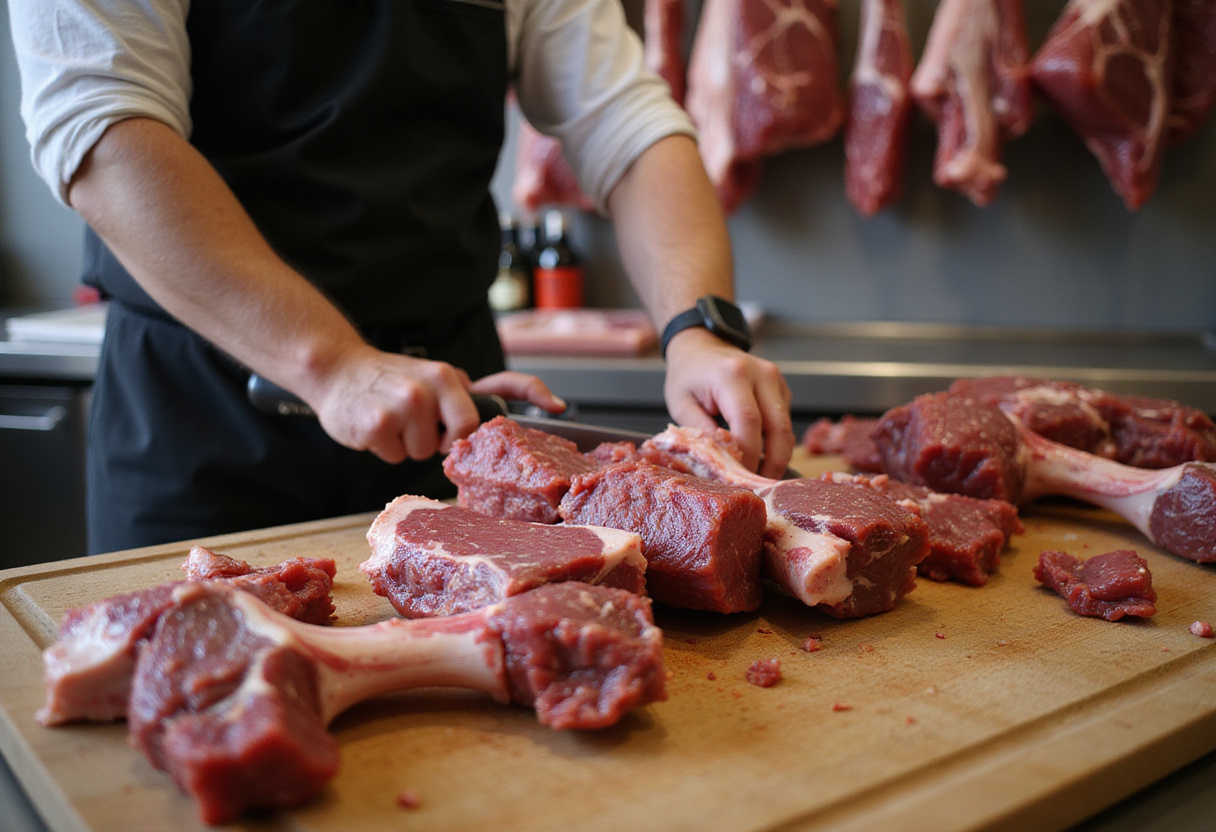
Step 2: Seasoning the Beef Shank
Liberally season the prepared beef shanks with the fundamental duo of salt and pepper, and then introduce any other spices or herbs that align with your flavor preferences. A few highly recommended options to consider include garlic powder, onion powder, smoked paprika, and a selection of dried herbs like thyme and rosemary. To really extract great flavour, you can also opt to employ a dry rub created specifically for beef. With diligence, ensure that all surfaces of the beef shank are uniformly coated. This optimizes flavor penetration during the slow cooking phase. If you’re thinking of baking cookies instead, you can use easy flour substitutes!
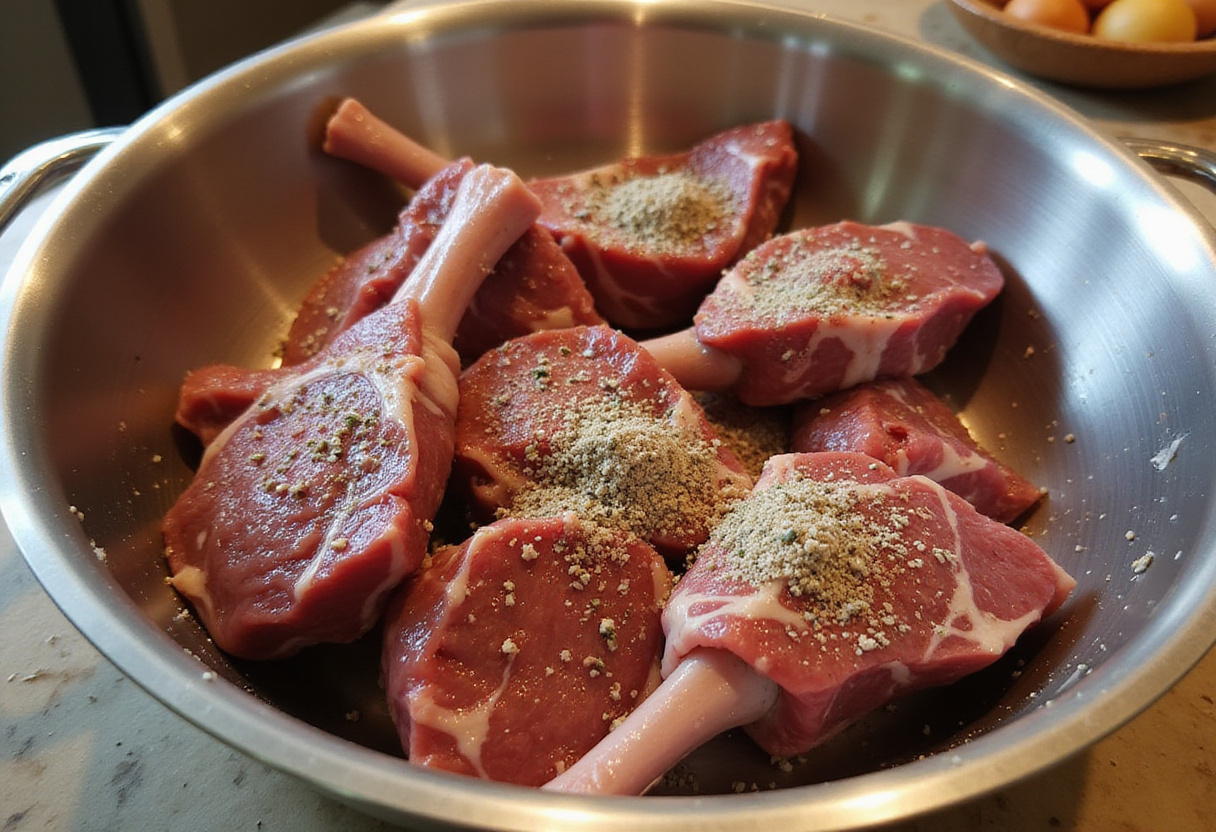
Step 3: Searing the Beef Shank
Achieving a thorough sear on the beef shanks ahead of launching into the slow cooking process is essential for maximizing a robust, deeply developed taste profile. Begin by positioning a large skillet or Dutch oven over medium-high heat and introducing one or two tablespoons of your preferred cooking oil. Once the cooking surface has reached its optimal temperature, carefully introduce the beef shanks. Sear all sides until a rich, appealing brown crust has formed. This crucial step lays the groundwork for a flavorful and texturally satisfying final dish. Be conscientious in avoiding overcrowding the cooking surface, searing in smaller batches as needed to accomplish the browning most effectively. Maybe you’re gluten intolerant? Here’s a recipe about gluten free sugar cookies.
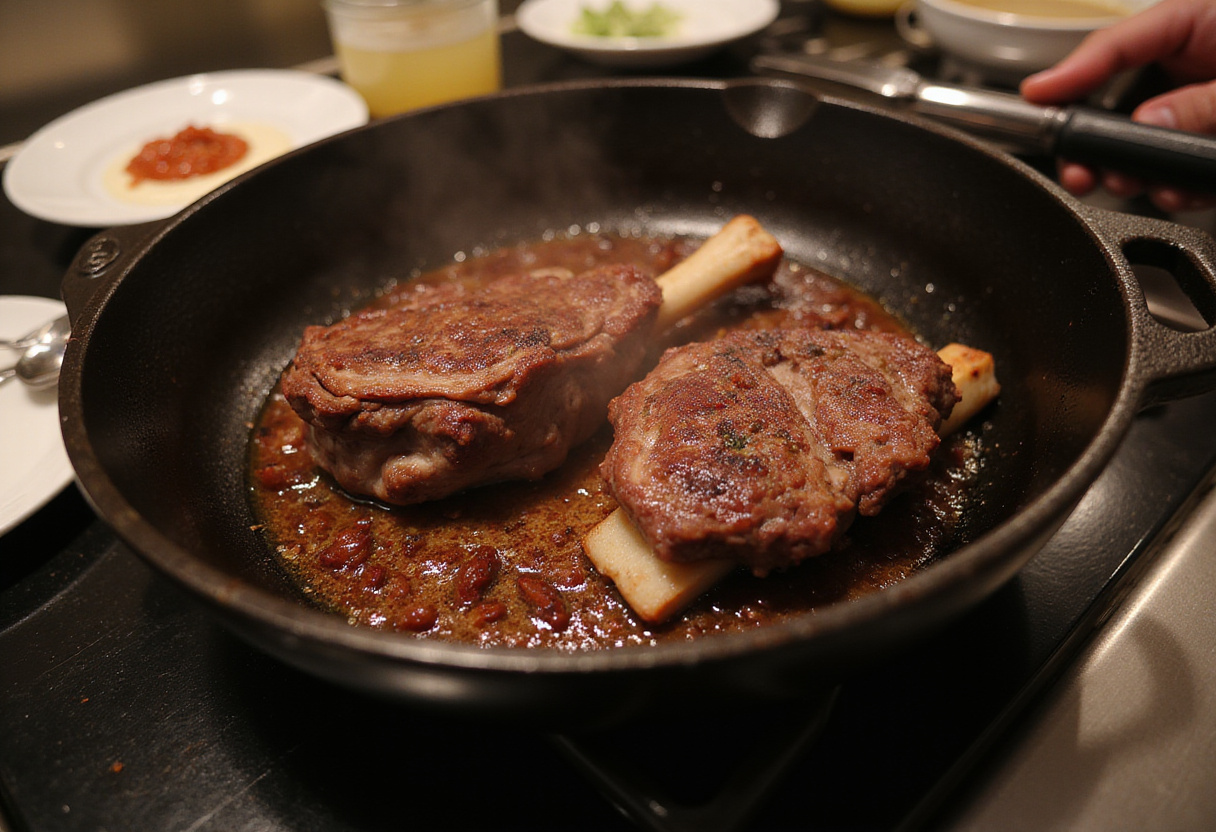
Step 4: Slow Cooking the Beef Shank
Arrange the carefully seared beef shanks within either a slow cooker or a Dutch oven, depending on your preferred cooking method. Introduce aromatics such as roughly chopped onions, carrots, and celery into the pot. Carefully pour in enough liquid – be it beef broth, red wine, or a balanced blend of both – to ensure the meat is almost fully submerged. Raise the liquid to a gentle simmer and then securely cover the cooking vessel. Allow the slow cooker to work its magic on a low setting for approximately 6-8 hours, or persist until the beef shank achieves the desired level of fork-tenderness. If you’ve opted for a Dutch oven, you have the option of transferring it to an oven preheated to 300°F (150°C) for the duration of the slow cooking process. If you need a simpler recipe, try these simple gluten-free sugar cookies!
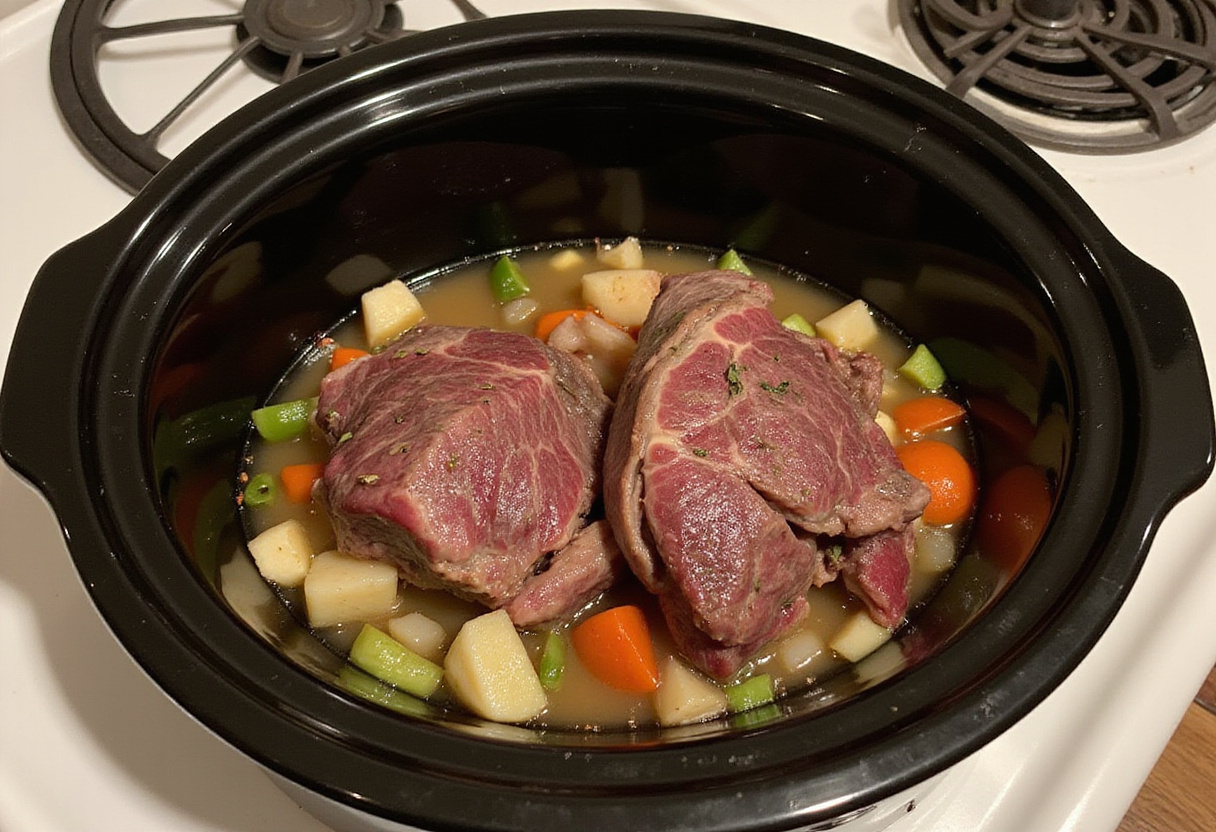
6. Tips for Enhancing Flavor
To further enhance the flavor profile of your beautifully slow-cooked beef shank, consider introducing a few carefully selected key ingredients. A modest splash of balsamic vinegar or a dash of Worcestershire sauce can impart remarkable depth and complexity to the overall taste. Similarly, fresh herbs such as rosemary, thyme, or bay leaves have the power to contribute aromatic notes that elevate the dish to new heights. For those seeking an exceptionally rich sauce, there’s the option to thicken the flavorful cooking liquid. This can be accomplished through the introduction of a cornstarch slurry or by gently reducing the liquid on the stovetop after the beef shanks have been carefully removed. Don’t shy away from experimenting with diverse flavor combinations to discover your own unique, signature spin on braised beef shank. You can even try making some magic cookie bars afterwards!
7. Serving Suggestions
Once the beef shank has been meticulously cooked to absolute perfection, proceed to shred the meat delicately using a fork. Then, present it in a variety of creative and delectable ways. It proves particularly delightful when served atop a bed of creamy mashed potatoes, enriched polenta, or exquisitely prepared creamy risotto. Alternatively, consider using the shredded beef shank as a flavorful and hearty filling for tacos, enchiladas, or savory sandwiches. The richly flavored cooking liquid, carefully separated through straining, can be repurposed as a delectable sauce or gravy accompaniment to the meat. Looking for more magic cookie bar recipes? Here’s a page about why magic cookie bars are gooey and one about eagle brand magic cookie bars.
8. Popular Beef Shank Recipes
Amongst the many beloved beef shank recipes, you’ll find the timeless charm of classic braised beef shank, lovingly prepared with red wine and an assortment of garden vegetables. Another highlight is the heartwarming slow cooker beef shank ragu. Finally, there’s the internationally acclaimed Osso Buco. For additional information and insights on preparing beef shanks, consider exploring this external resource.
9. Conclusion
In summary, **beef shank** emerges as a genuinely exceptional choice for **slow cooking**, providing a delicious and economical pathway to relishing tender and intensely flavorful meat. The **slow cooking** technique masterfully transforms the inherently tough collagen into a luscious gelatin, yielding a luxuriously rich, melt-in-your-mouth texture that’s simply unparalleled. Whether you opt for the convenience of a **slow cooker** or the traditional braising method within the oven, **beef shank slow cooking** stands out as a deeply rewarding culinary endeavor that unquestionably justifies the investment of both time and effort. So, during your next search for a satisfying and truly memorable meal, consider giving a well-crafted **beef shank recipe** a spot on your menu and unlock the mesmerizing magic of perfectly **braised beef shank**. “`

